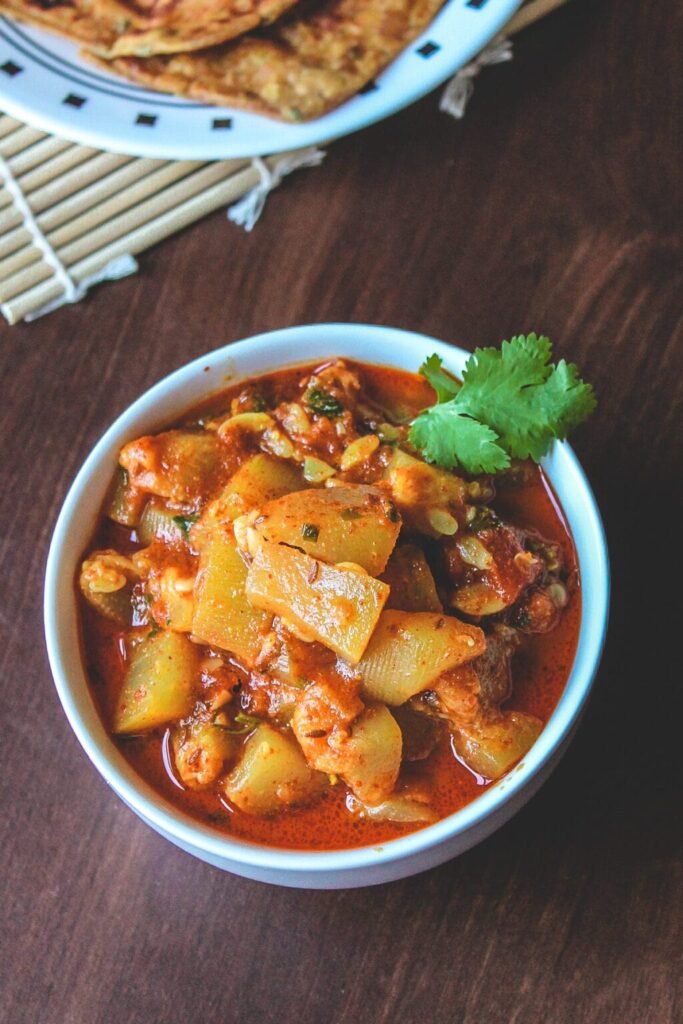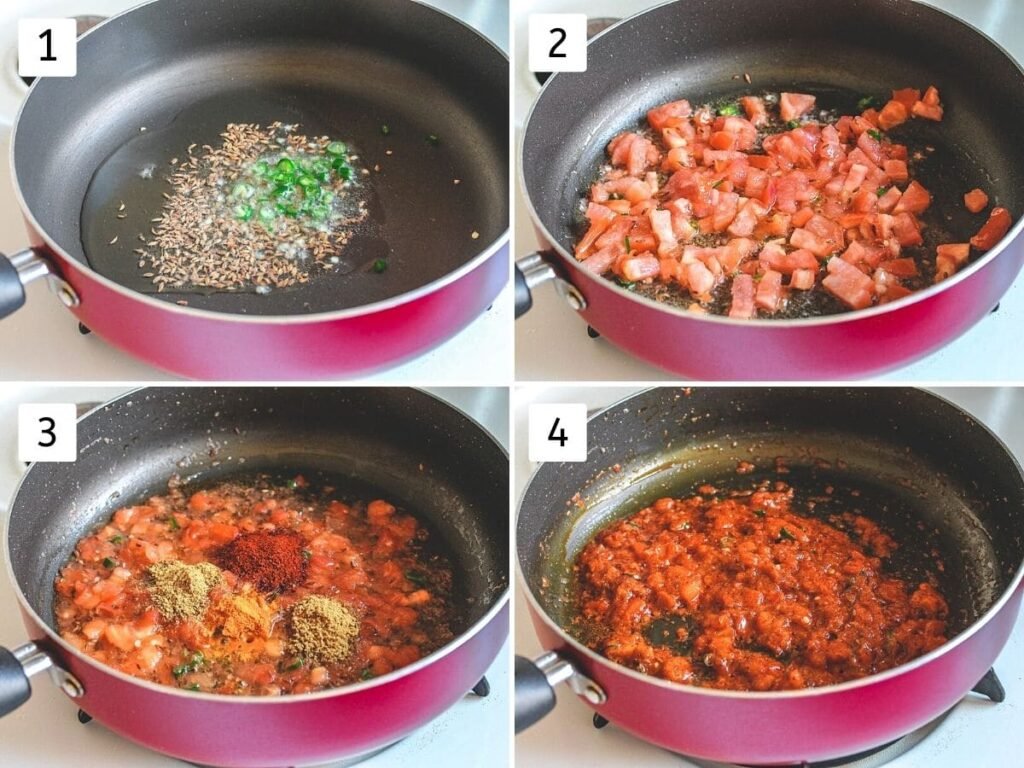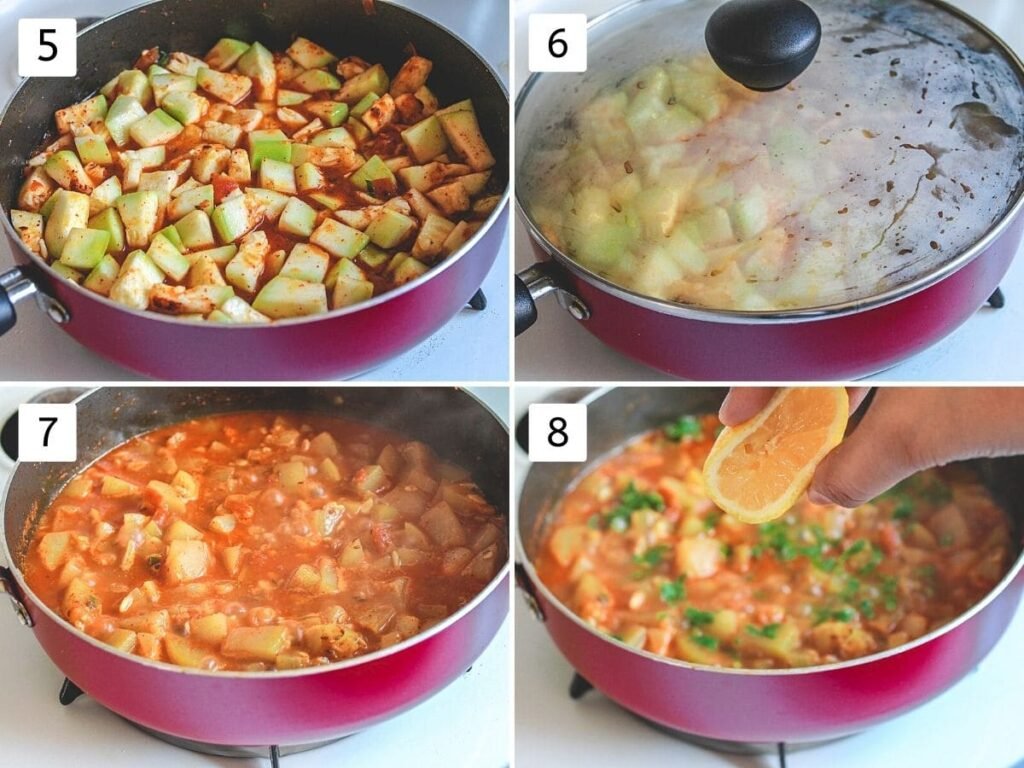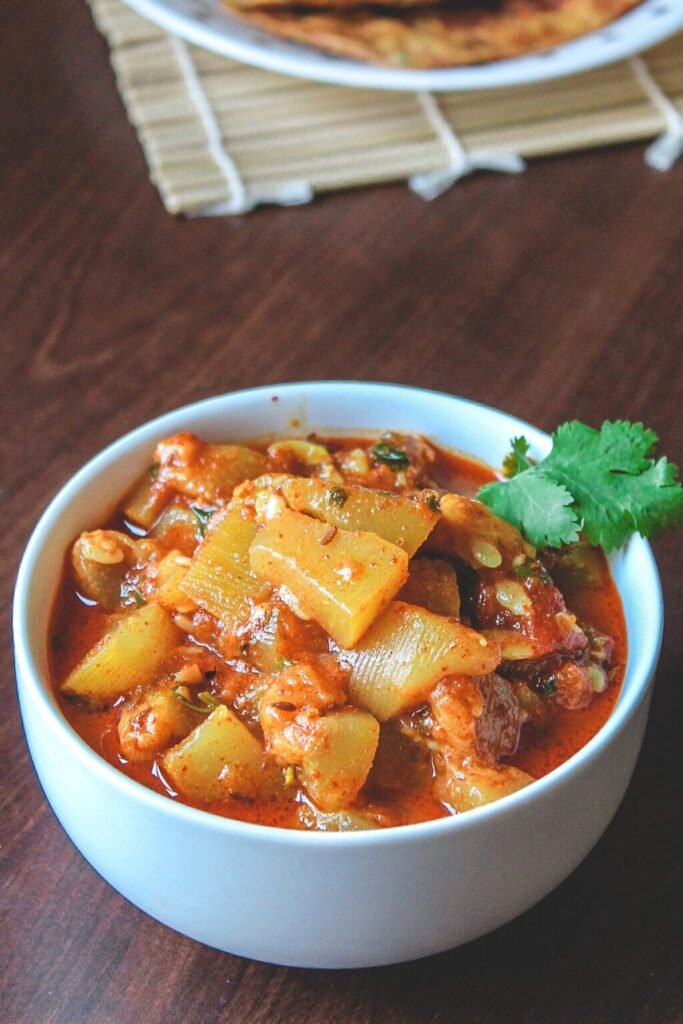Lauki Tamatar Sabzi is a wholesome and comforting Indian vegetable dish that pairs wonderfully with phulka, paratha, or a bowl of hot khichdi. Made with bottle gourd (lauki) and ripe tomatoes, this sabzi is not only light on the stomach but also rich in nutrients, making it an excellent choice for everyday meals.

What sets this recipe apart is its satvik preparation—it’s cooked without onion and garlic, making it ideal for vrat (fasting days), religious occasions, or simply when you’re in the mood for a clean, pure meal. Despite its simplicity, the dish bursts with subtle flavors, thanks to minimal spices and the natural sweetness of lauki balanced by the tanginess of tomatoes. Whether you’re aiming for a detox-friendly dinner or a nourishing side for your Indian thali, this lauki tamatar sabzi fits right in as a delicious and healthy option.
About This Lauki Tamatar Recipe
Lauki Tamatar Sabzi is a simple, wholesome, and incredibly light dish that deserves a regular place in your summer meal rotation. This healthy and hydrating sabzi keeps you refreshed on hot days, as bottle gourd (lauki or doodhi) naturally cools the body, aids digestion, and provides essential nutrients like fiber, vitamin C, B-complex vitamins, potassium, and magnesium.
The recipe comes together quickly using just a handful of ingredients, making it perfect for busy weekdays or those times when you want something nourishing yet fuss-free. The highlight of this preparation is its satvik nature — it’s completely free from onion and garlic, relying solely on tomatoes and a few common Indian spices to build flavor. This makes it ideal not just for everyday meals but also for religious fasts or detox days when clean eating is a priority.
The consistency of the curry tends to be on the thinner side, as bottle gourd contains a high percentage of water and lacks natural starch. However, if you prefer a thicker, more gravy-like sabzi, you can easily modify the texture by reducing the amount of water during cooking or by adding a few chopped potatoes, which not only absorb the flavors well but also help thicken the dish naturally.
Flavor-wise, this lauki tamatar sabzi offers a comforting balance. It’s mildly spiced with hints of warmth from cumin, turmeric, and green chilies, and its tangy undertone comes from juicy tomatoes and a final squeeze of fresh lemon juice. This gentle spice profile makes it suitable for all age groups, from kids to elders.
Whether you’re serving it alongside soft rotis, plain parathas, or a bowl of khichdi, this humble lauki tamatar curry offers a satisfying and healthy addition to your thali. It’s not just food—it’s comfort in a bowl, aligning beautifully with the principles of Ayurveda and satvik living.
Ingredient Notes:
- Lauki (Bottle Gourd): Select a fresh, light green bottle gourd that feels firm and heavy for its size. When you cut it open, check for soft, small, and tender white seeds — these are a sign of young lauki, ideal for cooking. If the seeds appear large, tough, or discolored, it’s best to scoop them out and discard, as mature seeds can alter the texture and taste of the sabzi. Also, ensure the flesh is pale and not spongy or hollow, which could indicate that the lauki is overripe or fibrous.
- Tomatoes: Tomatoes play a key role in this sabzi, as they form the base of the gravy in the absence of onion and garlic. Use ripe, juicy, and sweet varieties like Roma or plum tomatoes, which are commonly used in Indian cooking for their rich flavor and balanced acidity. Avoid unripe or overly tart tomatoes as they can make the gravy overly sour and unbalanced. For added depth, you may also combine regular tomatoes with a small amount of pureed or finely chopped cherry tomatoes if available.
- Lemon Juice (or Lime Juice): Lemon or lime juice is used at the end of cooking to brighten up the dish and enhance the tanginess. However, this ingredient is optional and should be used only after tasting the gravy. Depending on how tangy your tomatoes are, you may find you don’t need it at all. If the dish tastes well-rounded on its own, feel free to skip the lemon juice, or add just a few drops to lift the flavors without overpowering the sabzi.
How To Make Lauki Tamatar Sabzi?
1) Heat oil in a heavy-bottomed kadhai or deep pan over medium heat. Once the oil is adequately hot, add cumin seeds and allow them to sizzle and pop. This brief tempering step enhances the flavor, releasing the earthy aroma of the cumin which forms the base of the dish. Then stir in the chopped green chilies. Sauté for about 30–40 seconds until the chilies slightly change color and infuse the oil with flavor. You can adjust the quantity of chilies based on your spice preference.
2) Add chopped tomatoes to the pan. Cook them for 4–5 minutes, stirring occasionally, until they turn soft and mushy. You’ll notice the oil starts to separate slightly from the sides — this is a good indicator that the tomatoes are cooked through and ready for spices.
3) Sprinkle in the salt and ground spices. Add turmeric powder, red chili powder, cumin powder, and coriander powder. These basic Indian spices bring warmth, depth, and subtle heat to the dish.
4) Mix thoroughly to coat the tomatoes with the spices. Sauté the masala for another minute so the spices are well roasted and blend with the tomato base. Avoid overcooking, as dry masala can stick to the pan.

5) Add the peeled and cubed bottle gourd (lauki) along with water. Give everything a gentle mix, ensuring the lauki pieces are submerged in the liquid to cook evenly.
6) Place a lid over the pan and allow the lauki to simmer gently until it turns soft and fully cooked through. This may take around 12–15 minutes, depending on the size of your cubes. Stir occasionally to prevent sticking or burning.
7) If excess water remains after the lauki is cooked, increase the heat and simmer the sabzi uncovered. This evaporates the extra moisture and thickens the gravy naturally to your preferred consistency. The sabzi should be neither too watery nor too dry.
8) Finally, taste and adjust the tanginess. If your tomatoes weren’t very tangy, squeeze in a few drops of lemon juice to brighten the flavor. Finish with a generous sprinkle of freshly chopped coriander leaves. Serve hot with roti, paratha, or steamed rice.

Expert Tips For Lauki Tamatar Sabzi
Option 1 – Adjust Water Quantity:
If you prefer a semi-thick gravy, simply reduce the amount of water added while cooking. Since lauki naturally releases moisture, using less water at the beginning ensures a thicker consistency without much effort.
Option 2 – Add Potatoes for Body:
To naturally thicken the gravy, you can add a small potato, peeled and cubed, along with the lauki. Once the vegetables are cooked through, mash a few of the potato pieces gently with the back of a spoon. The starch from the potatoes will help absorb extra liquid and create a thicker, heartier gravy. Keep in mind that adding potatoes may mellow down the flavors slightly, so you may want to adjust the seasoning—especially the salt and spices—to maintain the right balance.
Flavor Twist – Garam Masala:
To elevate the flavor and add a hint of depth, you can stir in a small pinch of garam masala near the end of cooking. This not only enriches the aroma but also brings a subtle warmth to the dish, enhancing its overall appeal without overshadowing the delicate flavors of bottle gourd and tomatoes.
Instant Pot or Pressure Cooker Version:
To prepare this lauki tamatar sabzi in an Instant Pot, begin by following the same initial steps as the traditional stovetop method—sauté the cumin seeds, chilies, tomatoes, and spices before adding the chopped bottle gourd. Since pressure cooking traps moisture, reduce the water to about ¼ cup only. Secure the lid and pressure cook on “Manual” or “Pressure Cook” mode at high pressure for 5 to 6 minutes.

Serving Ideas For Lauki Tamatar
- This humble yet flavorful lauki tamatar sabzi pairs beautifully with a variety of Indian meals and can easily become part of your everyday menu. The most common way to enjoy it is with soft phulkas, chapati, or plain paratha, making for a wholesome, comforting lunch or dinner. For a more filling and balanced meal, serve it alongside steamed basmati rice or jeera rice, accompanied by a bowl of toor dal or moong dal.
- A refreshing side like kachumber salad—made with chopped cucumber, onion, tomato, and a squeeze of lemon—adds crunch and freshness, while a spoonful of homemade mango pickle or lemon pickle enhances the overall taste with a tangy kick.
- This sabzi also complements traditional Gujarati-style khichdi very well. We cherish the comforting combo of soft, ghee-drizzled khichdi paired with lauki tamatar sabzi, crispy roasted papad, and a spoonful of tangy mango pickle—bringing warmth, nostalgia, and satisfaction to every meal in our home.
- It’s a simple, nourishing, and soul-satisfying meal that’s perfect for both weekdays and lazy weekends. The mild flavors of the sabzi pair harmoniously with the soft, mushy texture of khichdi, making it an ideal choice especially during hot summers or when you crave something light yet flavorful. Whether served as part of a thali or enjoyed on its own with just roti, this lauki tamatar curry is a versatile addition to any Indian kitchen.
